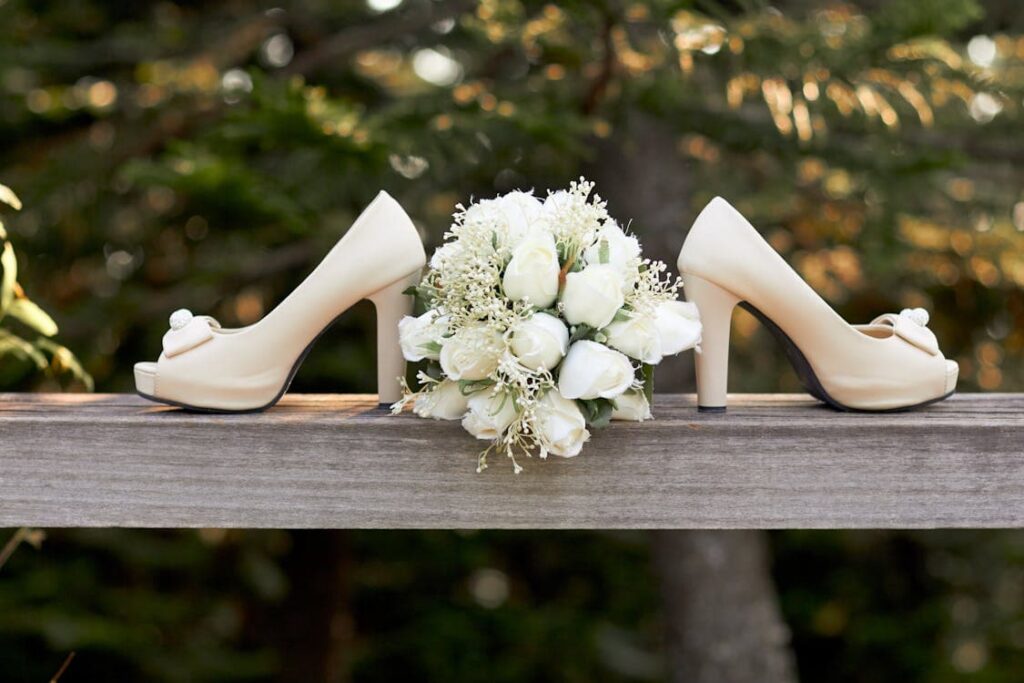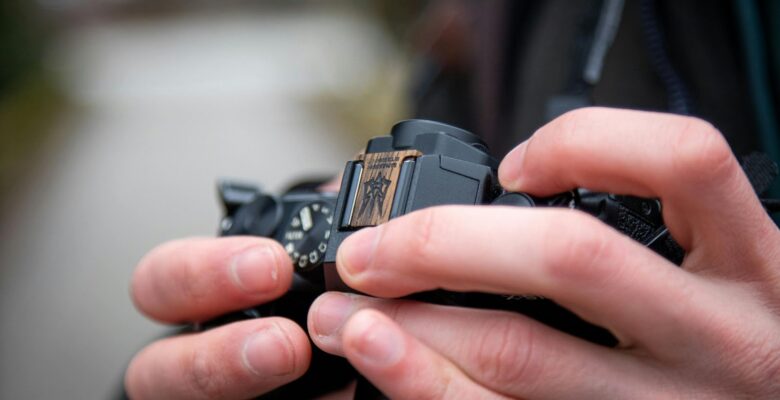The field of wedding photography is constantly changing, driven by new ideas and techniques. One popular trend making waves is the use of direct flash. This article aims to explore the details of direct flash in wedding photography, illustrating how it can add a modern touch to captured wedding moments.
Understanding Key Concepts in Photography Lighting
Before delving further into the direct flash trend, let’s clarify some essential terms:
- Ambient light: This refers to the natural or existing light in a scene, such as sunlight, moonlight, or artificial light sources like lamps or overhead lighting;
- Bounce flash: This technique involves directing the flash towards a surface, like a wall or ceiling, allowing the light to bounce off and indirectly illuminate the subject. This creates a softer, more diffused effect compared to direct flash.
Understanding these terms will enable you to distinguish between direct flash and other lighting techniques utilized by wedding photographers in the Boston area.
Understanding Direct Flash Photography
Direct flash photography involves using an on-camera flash directed straight at the subject, producing a vibrant and evenly illuminated image. This technique contrasts with alternative methods like bounce or off-camera flash, which disperse light to achieve a softer, more diffused effect.
The Rise of Direct Flash in Wedding Photography
Direct flash has surged in popularity within wedding photography circles due to its capacity to authentically capture the raw emotions of the moment. It delivers a quality of light reminiscent of disposable cameras and high fashion, aligning with contemporary photographic trends. Employing this technique imparts a distinctive, modern aesthetic to Boston wedding photos, distinguishing them from conventional wedding imagery.
Optimal Flash Solution for Wedding Receptions
When it comes to capturing the essence of a wedding reception, the Flashpoint Zoom Li-ion Mini TTL R2 stands out as the ultimate choice for direct flash photography. Not only is it cost-effective and lightweight, but its lithium battery ensures uninterrupted shooting throughout the event. Equipped with a built-in Radio Transceiver, this flash facilitates seamless multi-flash setups, simplifying the photographer’s workflow.
For wedding assignments, two Flashpoint Zoom Li-ion Mini TTL R2 flashes are essential, accompanied by two spare batteries and a charger. This minimalist approach to equipment ensures readiness for any lighting scenario that arises during the festivities. Overall, the Flashpoint Zoom Li-ion Mini TTL R2 strikes the perfect balance between convenience and performance, making it the top recommendation for wedding receptions.
For those hectic doubleheader weekends, investing in two flashes, two chargers, and three batteries ensures full preparation to handle the demands of consecutive events.
- 2x Flashpoint Zoom Li-ion Mini TTL R2;
- 2x Flashpoint Battery Charger for the Zoom Li-on Mini Flash Battery (C20);
- 3x Flashpoint Lithium-Ion Battery for Zoom Lion Mini Flash (7.2V, 2000mAh) VB20.
Adjusting Camera Parameters for Direct Flash
For direct flash photography, it’s beneficial to explore different combinations of shutter speeds, apertures, and ISO settings. Typically, opting for a faster shutter speed (1/125 or above) and a narrower aperture (f/2.8 to f/9) helps harmonize the flash with ambient light. Maintain the ISO setting at the lowest feasible level (100-400) to reduce noise.
In the context of a wedding reception, when the flash power is set to 1/128 and the subject is positioned 4-5 feet away, adhering to the following camera settings ensures proper exposure:
- Shutter Speed: 1/200;
- Aperture (F-Stop): 2.8;
- ISO Speed: 400.
Configuration for Direct Flash Photography
When photographing a wedding reception using direct flash, the Flashpoint flash is mounted on the camera at a 90-degree angle. Opting for manual mode, the flash power is adjusted to the lowest setting while the zoom is set to 70mm. Concurrently, camera settings are adjusted to 1/200 shutter speed, f/2.8 aperture, and ISO 320.
In summary, the direct flash settings are as follows:
- Flash Mode: Manual;
- Power Setting: 1/128;
- Zoom: 70mm.
Direct Flash Placement Techniques
Explore various angles for positioning the flash concerning your subject. Utilizing different angles can generate captivating shadows and highlights, infusing depth and dimension into your photographs.
Mastering these techniques can enhance your proficiency in direct flash wedding photography, resulting in captivating and contemporary imagery.
- Direct Flash Angle: 90 Degrees
Enhancing Flash Output: Modifiers
Diffusers, grids, or snoots serve as effective tools for managing the direction and dispersion of light emitted by the flash. These accessories contribute to refining the appearance of direct flash wedding photographs.
Preferably, no modifiers are utilized on the direct flash. This choice is driven by the aim to minimize the load of camera equipment and to appreciate the aesthetic of a direct flash zoomed in to 70mm.
Advantages of Utilizing Direct Flash in Photography

Immobilize Motion with Clarity:
Direct flash excels in arresting motion, especially in lively settings such as dance floors. It emits a powerful light burst that not only illuminates your subjects but also sharply delineates their expressions and actions. This technique enables photographers to capture the essence of a dynamic environment, making every moment stand out in event photography, like weddings.
Enhance Visual Impact through Contrast:
A distinct benefit of using direct flash is its ability to introduce pronounced contrast in photos. This heightened contrast ensures that subjects are vividly distinguished from their backgrounds, injecting drama and dimension into your images. Such dramatic effects can transform dance floor captures into standout pieces in any event collection.
Brighten Colors for Dramatic Effect:
Direct flash plays a crucial role in amplifying the colors present in a scene. From the vivid attire of participants to the rich colors of the lighting and decorations, the intense light from the flash accentuates these elements. The result is images that burst with color, making each photograph a visually compelling part of an event’s narrative.
Optimizing Direct Flash for Stunning Wedding Photos
Determining the Optimal Moments for Direct Flash Usage
Grasping the intricacies of venue and lighting conditions is crucial in deciding when to utilize direct flash in wedding photography. With a background in shooting at various venues in Boston, the importance of recognizing how each location presents unique opportunities for effective direct flash usage has been acknowledged. While some settings may be more conducive to natural light, others can significantly benefit from the strategic application of direct flash. It is vital to explore both lighting options during the wedding reception to identify what produces the most visually appealing results.
Direct Flash for a Consistent Dance Floor Aesthetic
Direct flash can bring dynamic energy and charm to wedding photos, yet maintaining a consistent visual style throughout the wedding album is equally critical. Therefore, direct flash is often applied on the dance floor, where it captures the vibrancy and spontaneity of the celebrations.
Focusing direct flash use in this particular setting helps achieve a cohesive and refined look across all wedding photographs. This targeted approach to direct flash photography ensures the thorough and beautiful documentation of the event. Samples of this technique are available in the galleries from Boston Public Library and Lenox Hotel weddings.
Conclusion
The adoption of direct flash in wedding photography offers a unique opportunity to capture the raw and authentic emotions that embody the essence of the big day. With smart manipulation of flash intensity, camera settings, positioning, and understanding the optimal usage scenarios, wedding photographers can create a visually stunning and emotionally resonant collection of wedding photographs. This modern trend is key to crafting images that not only document the event but also encapsulate the joy, celebration, and love present in each frame.
